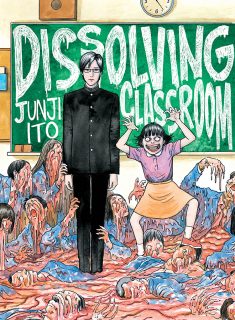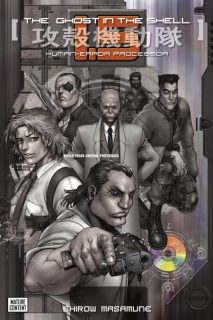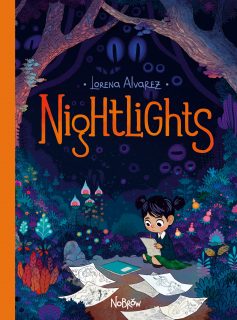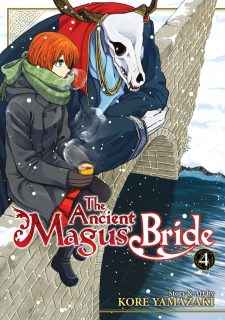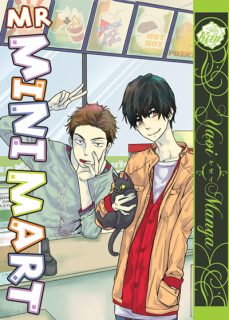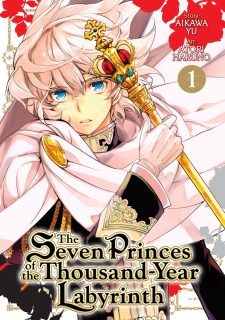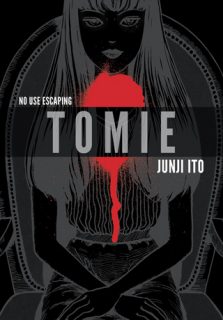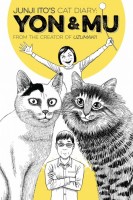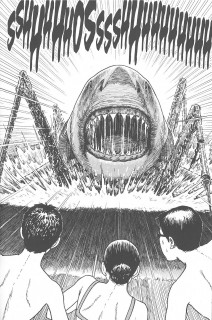My News and Reviews
I shifted around my usual posting schedule at Experiments in Manga a little last week so, instead of posting July’s Bookshelf Overload, I ended up featuring my review of Kazuki Sakuraba’s most recent work to be released in English, A Small Charred Face. The book is scheduled to be released in September (I received an advanced copy from Haikasoru for review purposes), and is definitely worth checking out. I’m not especially interested in vampire fiction, but A Small Charred Face makes for a very interesting contribution to the genre and I loved the queerness present in the story. Sakuraba is probably best known as the creator of Gosick, which I’ve been meaning to read, but my introduction to her work was through Red Girls: The Legend of the Akakuchibas.
Elsewhere online last week: Justin of The OASG posted a transcript of Four Hundred Pages of Manga Every Single Week, a roundtable discussion held in July which was sponsored by Kodansha Comics and featured three of Weekly Shonen Magazine‘s editors, including the editor-in-chief; Anime News Network interviewed Akira Himekawa, the creative team behind most of The Legend of Zelda manga adaptations; Viz Media made a some licensing announcements while at Otakon including RWBY by Shirow Miwa, Takane & Hana by Yuki Shiwasu, and The Young Master’s Revenge by Meca Tanaka; Also at Otakon, Sekai Project, which is still relatively new to manga publishing, announced the acquisition of Keika Hanada and Kanemune’s manga adaptation of The House in Fata Morgana.
Quick Takes
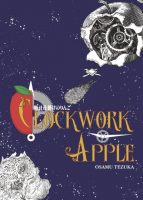 Clockwork Apple by Osamu Tezuka. I’ll admit, I managed to burn myself out on Tezuka for a bit, so I’ve managed to amass quite a stockpile of his recently-translated manga which I haven’t actually gotten around to reading yet. Clockwork Apple is a collection of eight short manga originally published between 1968 to 1973. While they aren’t directly related to one another, they do share a similar tone, were generally intended for an adult audience (mostly seinen, I believe), and can all broadly be described as speculative fiction. The stories in Clockwork Apple tend to be fairly dark, dramatic, and serious. The visual humor, breaking of the forth wall, and self-awareness frequently present in Tezuka’s other non-comedic works are nearly nonexistent in the Clockwork Apple. (I don’t think the Tezuka’s Star System was applied, either.) Tezuka was personally having a difficult time in the late 1960s and early 1970s, so perhaps the tenor of these stories is partly a reflection of that. In general, I enjoyed the stories collected in Clockwork Apple even though the endings would sometimes be a little hit-or-miss or feel rushed. Each story would have at least one plot-altering twist, some had several, but occasionally those developments would come across as convenient rather than compelling.
Clockwork Apple by Osamu Tezuka. I’ll admit, I managed to burn myself out on Tezuka for a bit, so I’ve managed to amass quite a stockpile of his recently-translated manga which I haven’t actually gotten around to reading yet. Clockwork Apple is a collection of eight short manga originally published between 1968 to 1973. While they aren’t directly related to one another, they do share a similar tone, were generally intended for an adult audience (mostly seinen, I believe), and can all broadly be described as speculative fiction. The stories in Clockwork Apple tend to be fairly dark, dramatic, and serious. The visual humor, breaking of the forth wall, and self-awareness frequently present in Tezuka’s other non-comedic works are nearly nonexistent in the Clockwork Apple. (I don’t think the Tezuka’s Star System was applied, either.) Tezuka was personally having a difficult time in the late 1960s and early 1970s, so perhaps the tenor of these stories is partly a reflection of that. In general, I enjoyed the stories collected in Clockwork Apple even though the endings would sometimes be a little hit-or-miss or feel rushed. Each story would have at least one plot-altering twist, some had several, but occasionally those developments would come across as convenient rather than compelling.
 Flesh-Colored Horror by Junji Ito. Most of Ito’s manga to have been translated into English are currently in print or have been recently reissued in a new edition and even more have been scheduled to be released in the near future. One of the few exceptions is Flesh-Colored Horror, the third and final volume in The Junji Ito Horror Comic Collection series released by ComicsOne. Currently, the volume can be a little difficult and expensive to find, but fortunately one of my local libraries had a copy. (I really hope to be able to find a reasonably-priced one of my own someday.) In addition to the titular story, Flesh-Colored Horror collects five of Ito’s other short horror manga. The six unrelated stories were originally published between 1988 and 1994 in Monthly Halloween, a shoujo manga magazine specializing in horror. Flesh-Colored Horror is a fantastic collection that is well-worth seeking out for either fans of Ito’s work or of weird horror in general. Ito has a way of starting with a simple and at times even mundane premise and twisting it into something truly strange and horrific. For whatever reason, while I greatly enjoy most of Ito’s work, I do find that I often prefer Ito’s older short manga over more recent collections; Flesh-Colored Horror continues that trend.
Flesh-Colored Horror by Junji Ito. Most of Ito’s manga to have been translated into English are currently in print or have been recently reissued in a new edition and even more have been scheduled to be released in the near future. One of the few exceptions is Flesh-Colored Horror, the third and final volume in The Junji Ito Horror Comic Collection series released by ComicsOne. Currently, the volume can be a little difficult and expensive to find, but fortunately one of my local libraries had a copy. (I really hope to be able to find a reasonably-priced one of my own someday.) In addition to the titular story, Flesh-Colored Horror collects five of Ito’s other short horror manga. The six unrelated stories were originally published between 1988 and 1994 in Monthly Halloween, a shoujo manga magazine specializing in horror. Flesh-Colored Horror is a fantastic collection that is well-worth seeking out for either fans of Ito’s work or of weird horror in general. Ito has a way of starting with a simple and at times even mundane premise and twisting it into something truly strange and horrific. For whatever reason, while I greatly enjoy most of Ito’s work, I do find that I often prefer Ito’s older short manga over more recent collections; Flesh-Colored Horror continues that trend.
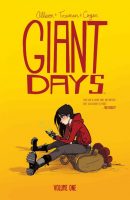 Giant Days, Volume 1 written by John Allison and illustrated by Lissa Treiman and Whitney Cogar. I’ve been hearing good things about Giant Days for a while–the series has been nominated for multiple Eisner and Harvey Awards in the past, and several of my friends keep up with the comic–but I’m only getting around to reading it now. One thing that I didn’t realize about Giant Days, which initially started as a self-published webcomic before being picked up by Boom! Studios, is that it’s actually a spinoff of Allison’s earlier series Scary Go Round. I haven’t actually read Scary Go Round, but fortunately familiarity with that comic isn’t at all necessary to understand Giant Days. The comic largely follows three university students–Esther, Daisy, and Susan–who become close friends after living together in the same residence hall. The first volume seems to favor exploring the characters, their personalities, and relationships over having a strong overarching plotline. At times the comic feels somewhat disjointed and the scene changes can be rather abrupt, but the series has a good sense of humor and I do honestly like the characters. I think I would need to read a little more of Giant Days to really feel invested in their stories, but I greatly appreciate the inclusion of queer characters in the increasingly large cast.
Giant Days, Volume 1 written by John Allison and illustrated by Lissa Treiman and Whitney Cogar. I’ve been hearing good things about Giant Days for a while–the series has been nominated for multiple Eisner and Harvey Awards in the past, and several of my friends keep up with the comic–but I’m only getting around to reading it now. One thing that I didn’t realize about Giant Days, which initially started as a self-published webcomic before being picked up by Boom! Studios, is that it’s actually a spinoff of Allison’s earlier series Scary Go Round. I haven’t actually read Scary Go Round, but fortunately familiarity with that comic isn’t at all necessary to understand Giant Days. The comic largely follows three university students–Esther, Daisy, and Susan–who become close friends after living together in the same residence hall. The first volume seems to favor exploring the characters, their personalities, and relationships over having a strong overarching plotline. At times the comic feels somewhat disjointed and the scene changes can be rather abrupt, but the series has a good sense of humor and I do honestly like the characters. I think I would need to read a little more of Giant Days to really feel invested in their stories, but I greatly appreciate the inclusion of queer characters in the increasingly large cast.

